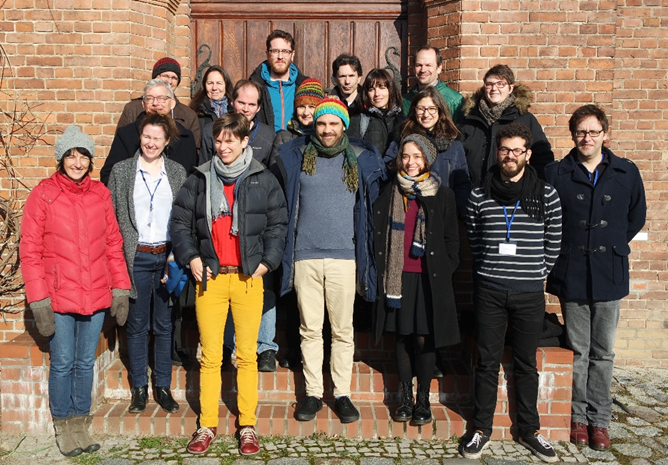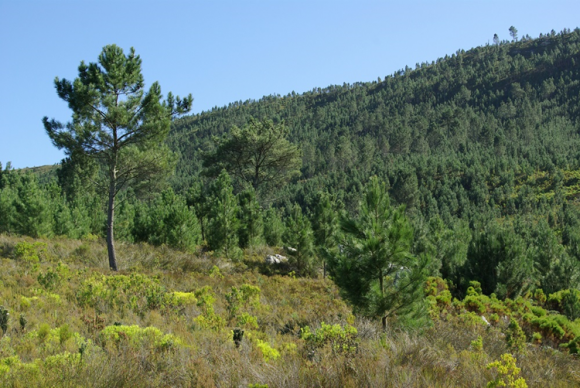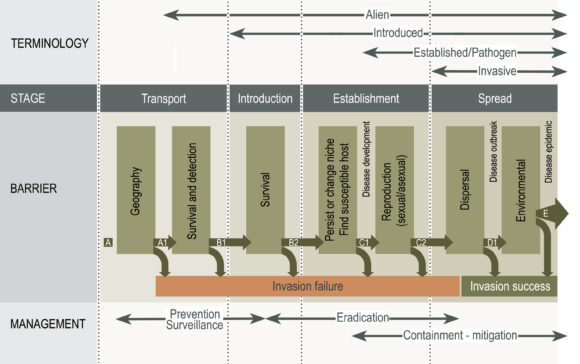21 April 2020 | By Sabrina Kumschick and Jonathan Jeschke
The field of invasion biology has accumulated a number of hypotheses and concepts – some of these are overlapping or redundant, a few others even contradictory. This has led to the situation that invasion biologists are having an increasingly hard time to maintain an overview of the discipline’s important ideas. The field is thus in need of navigation tools that provide orientation.

Several C·I·B researchers, including C·I·B core team member Sabrina Kumschick, former C·I·B postdoctoral associates Florencia Yannelli and Wolf-Christian Saul as well as C·I·B associates Christoph Kueffer, Franz Essl and Petr Pyšek, teamed up with an international group of invasion biologists led by Martin Enders and Jonathan Jeschke from the Free University of Berlin and the Leibniz-Institute of Freshwater Ecology and Inland Fisheries (IGB) to develop and apply a novel consensus method that allows to map hypotheses in a research field.
The method that the team developed can be applied in any scientific discipline, hence this first application in invasion biology also serves as a proof-of-concept. The researchers started by defining 39 invasion hypotheses and then followed nine steps to create a network of these hypotheses. The network groups hypotheses in clusters that share a particular perspective on biological invasions. Users of the map can thus quickly locate similar, redundant or contradictory concepts about invasive species.
In future, the team aims to also map hypotheses in related research fields, such as restoration ecology or urban ecology, and to provide the conceptual maps as interactive tools online (see www.hi-knowledge.org).
Jonathan Jeschke, senior author of the study, added: “Our vision is to eventually create an open and interactive atlas of knowledge covering all scientific disciplines. This can only be achieved by a large inter- and transdisciplinary team. Please contact us if you’d like to join us to work towards this vision!”
Read the paper
Enders, M.; Havemann, F.; Ruland, F.; Bernard-Verdier, M.; Catford, J.A.; Gómez-Aparicio, L.; Haider, S.; Heger, T.; Kueffer, C.; Kühn, I.; Meyerson, L.A.; Musseau, C.; Novoa, A.; Ricciardi, A.; Sagouis, A.; Schittko, C.; Strayer, D.L.; Vilà, M.; Essl, F.; Hulme, P.E.; van Kleunen, M.; Kumschick, S.; Lockwood, J.L.; Mabey, A.L.; McGeoch, M.; Palma, E.; Pyšek, P.; Saul, W.-C.; Yannelli, F.A.; Jeschke, J.M. 2020. A conceptual map of invasion biology: integrating hypotheses into a consensus network. Global Ecology and Biogeography. https://doi.org/10.1111/geb.13082
For more information, contact Sabrina Kumschick at sabrinakumschick@sun.ac.za or Jonathan Jeschke at jonathan.jeschke@fu-berlin.de




